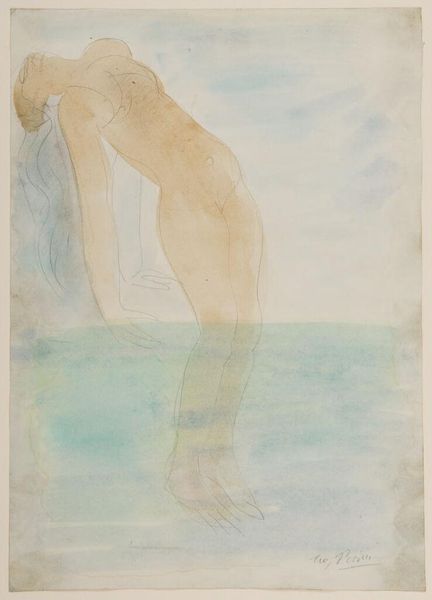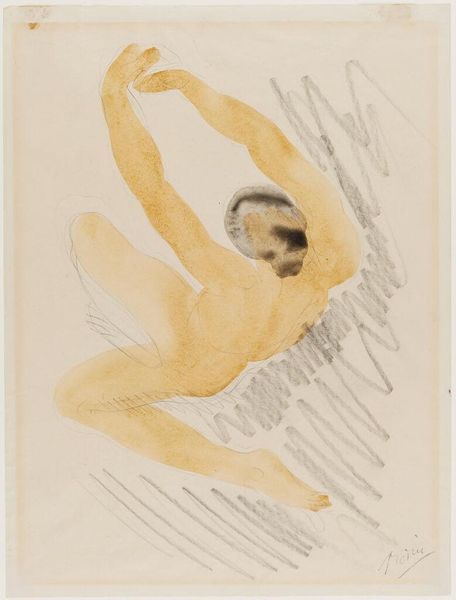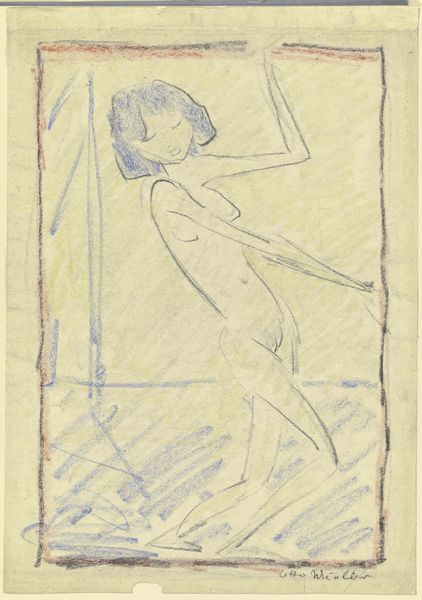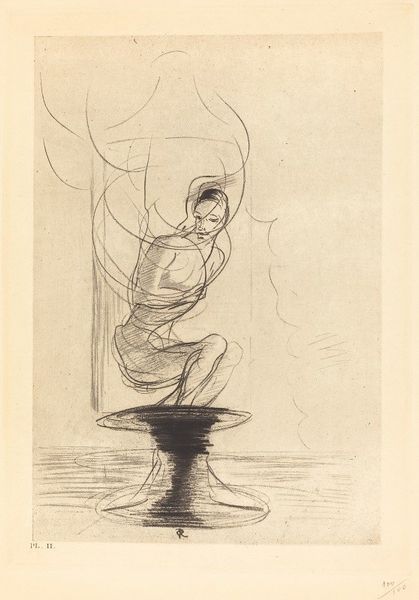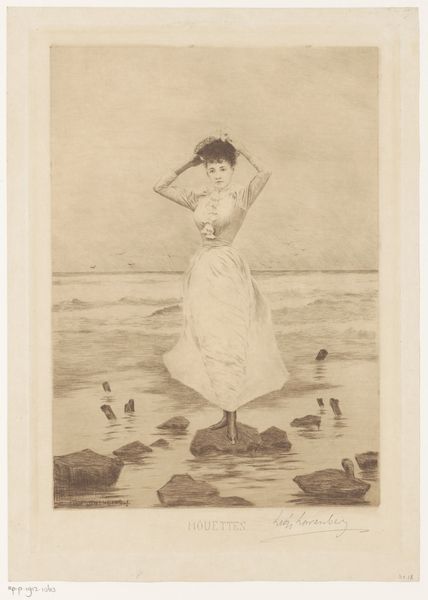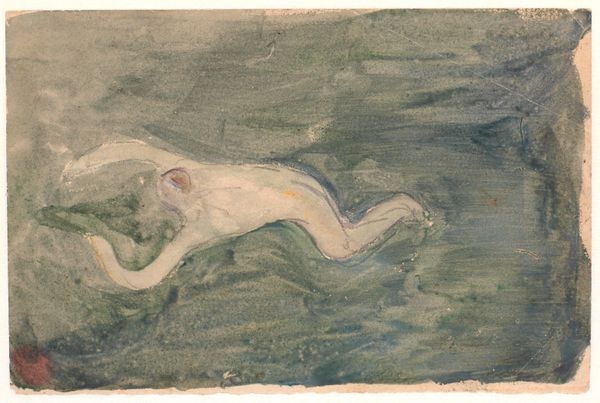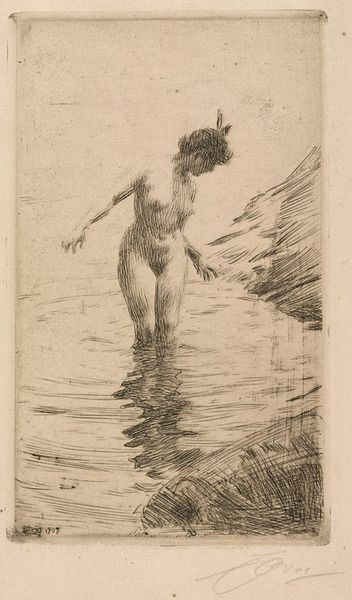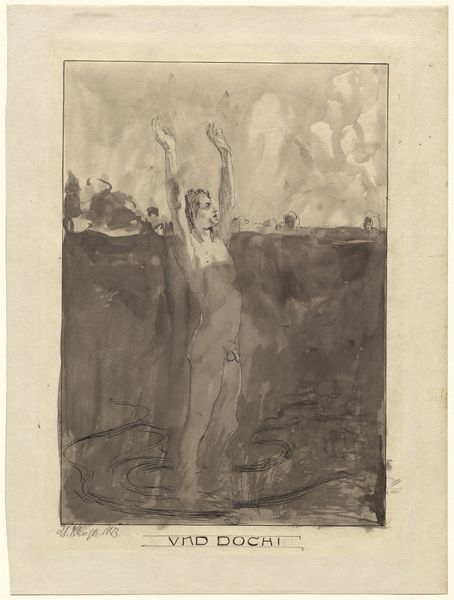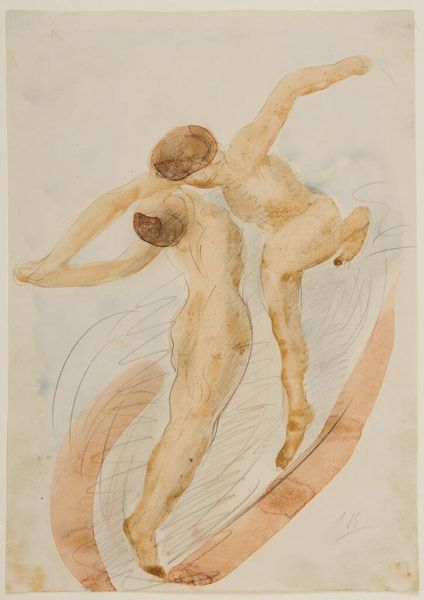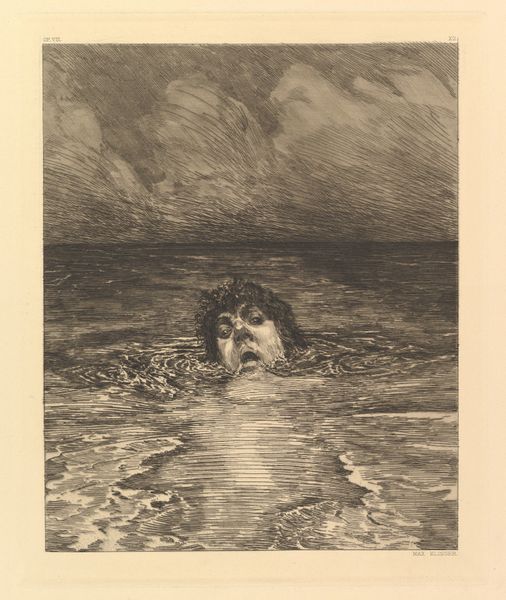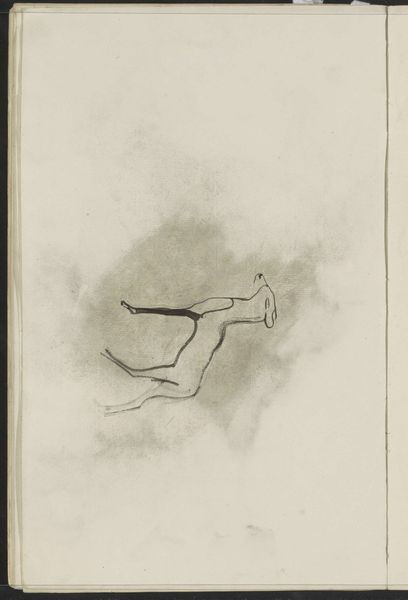
Copyright: Public domain Japan
Editor: Here we have Koshiro Onchi’s 1928 woodcut print, "Lakeside." The lone figure, nude and arms outstretched, appears to be wading or perhaps dancing in shallow water. I’m struck by its ethereal, dreamlike quality. How do you interpret this work? Curator: The figure certainly evokes a sense of vulnerability and openness. Consider Onchi’s position within the Sosaku-hanga movement, which championed individual expression and the artist's complete control over the printmaking process. How might that artistic autonomy be seen in relation to broader social shifts in 1920s Japan? Was this exploration of the individual body – particularly a nude figure – a subtle form of social commentary, perhaps questioning traditional norms around the representation of the human form, and freedom of expression, particularly through printmaking? Editor: That's interesting. So you’re suggesting that, beyond the surface-level serenity, there could be a subtle commentary on personal liberation? The artist would have control, end-to-end, over this print, from idea to execution. That means, perhaps, they controlled their narrative in ways other artists did not. Curator: Exactly. Think about the context. The Taisho Democracy period saw new intellectual and artistic currents entering Japan. Could this nude figure in "Lakeside," with its blending of ukiyo-e traditions and modern self-expression, be a visual metaphor for navigating those changing social waters? I'm particularly interested in your perspective as a student – does the image resonate with you in terms of contemporary ideas about body autonomy and self-expression? Editor: Definitely! The idea of owning your image and defining yourself resonates a lot. I see how Onchi, by embracing this more modern creative process, could open a window to discussing those topics. Curator: And understanding the relationship between tradition and modernity, the personal and the political enriches our understanding and deepens our experience with this deceptively simple woodcut. Editor: I’ll certainly remember that context when I look at art moving forward. Thank you!
Comments
No comments
Be the first to comment and join the conversation on the ultimate creative platform.

